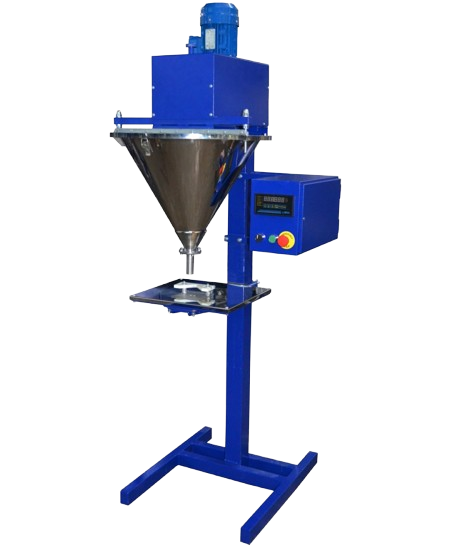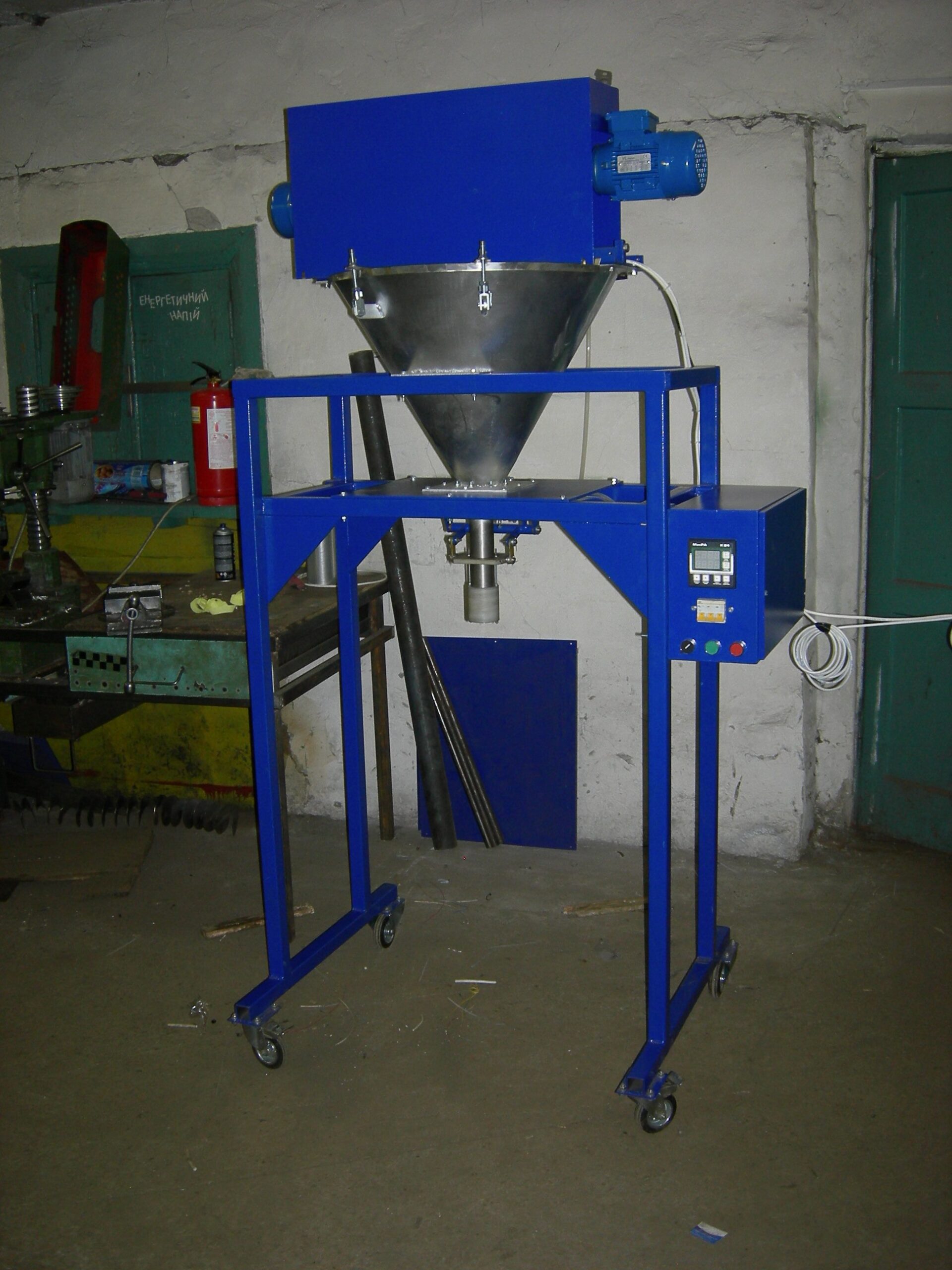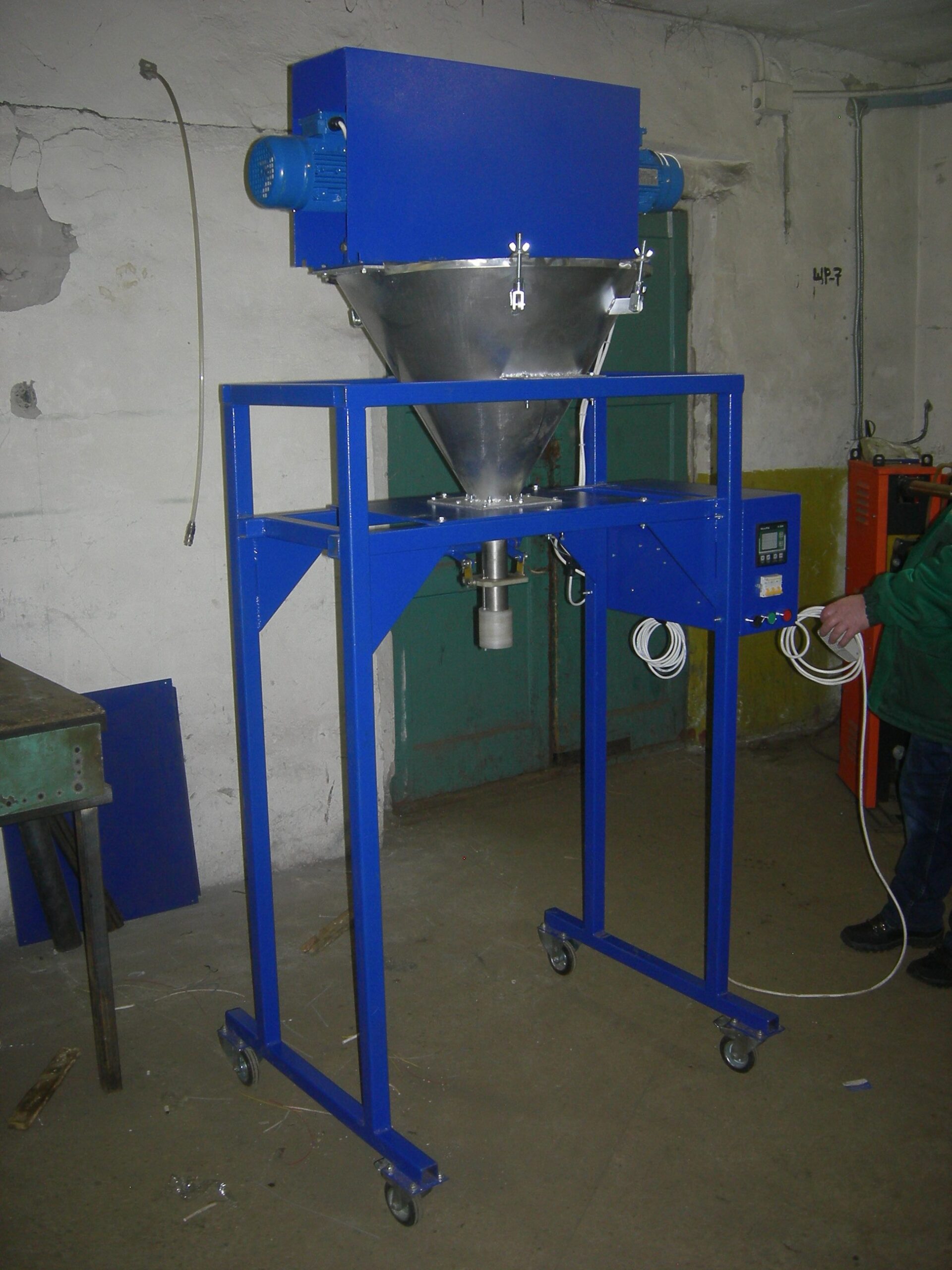
Weighing platform doser, with a screw feeder, is designed forpackaging by weightdosing of dust-forming (dusting) bulk products into finished containers or packaging (package, sack, box, jar, bottle). It operates in a semi-automatic mode and requires the operator to install the container, give a command to start dosing, and collect the filled container. The equipment is used for packaging and packaging starch, powdered sugar, chalk, flour, toner, etc., with a capacity of up to 1000 doses per hour.
| Power supply, V/Hz | 380/50 |
| Power consumption, kW/hour | 2 |
| Pneumatic supply**, atm./l.min. | none |
| Length / Width / Height (max), mm | 1700/1200/2200 |
| Weight (max), kg | 160 |
| Productivity (max)*, packs/hour | 500-600 |
| Storage bin volume, l | 100 |
| Dosage range, g | 1000 – 5000 |
| Package length/width (max), mm | 400/240 |
* Productivity depends on the dose weight and the properties of the dosing product.
Description of work.
The product being dosed is poured down the inclined walls of the hopper to a horizontal pipe located at the bottom. An auger passes through the pipe, one end of which is fixed in the electric drive. Pouring into the pipe, the product fills the cavities between the screw surface of the auger and the inner surface of the pipe.
Upon receiving a signal to start operation (the operator pressing a button or pedal), the Libra controller, located in the control unit, supplies power to the electric drive, which begins to rotate the auger.
While rotating, the auger moves the product being dosed (along its screw surface) from the hopper to the nozzle, through which the product is poured into the packaging (container) installed on the weighing table. The container filled with the product creates pressure on the weighing table, which is attached to the frame of the equipment using strain gauges (strain gauges).
The Libra controller monitors the packaging achievement of the set weight indicators (dose size) by the signal from the strain gauges, changing the auger operation modes: from the moment the dose is dispensed until the set threshold value, the auger rotates quickly (coarse dosing mode), and after reaching the threshold value, the auger speed decreases and the product is added (fine dosing mode).
The use of these two modes is necessary to ensure sufficiently high productivity while eliminating excess dose: the coarse dosing mode ensures rapid filling of the packaging, and the fine dosing mode eliminates accidental excess dose. The auger rotation speed in these modes is determined by the values set on the frequency converter.
When the set weight parameters (dose size) are reached, the controller stops the auger rotation and stops dispensing the product into the packaging. The operator must replace the filled packaging (container) with an empty one, after which he can again give a signal to start work (by pressing a button or pedal), continuing the dosing process.
Features.
The dispenser is optimal for dosing powdery dust-forming (dusting) products (flour, powdered sugar, starch, chalk, toner). The dispenser is capable of dosing other free-flowing products, including non-dust-forming ones, but the presence of a screw that moves the product in a closed space (pipe) directly to thepackaging and, as a result, reduces dust formation, leads to the fact that the dispenser is mainly used for dosing dust-forming bulk products. Not applicable for large fraction products, fragile and sticky products that can jam the auger or crumble during the dosing process.
The weighing doser allows you to arbitrarily change the portions of the product being packaged, as well as achieve fairly accurate dosing. Unlike volumetric dosers, it has no restrictions on changing the product being dosed. The vertical arrangement of the auger allows for higher quality and more accurate dosing of the product, and the presence of a stirrer reduces the likelihood of the product sticking to the walls of the storage bin.
This equipment is available in one model HD-20-B, with modifications in terms of weight parameters, dosage, and overall dimensions of the packaging.










